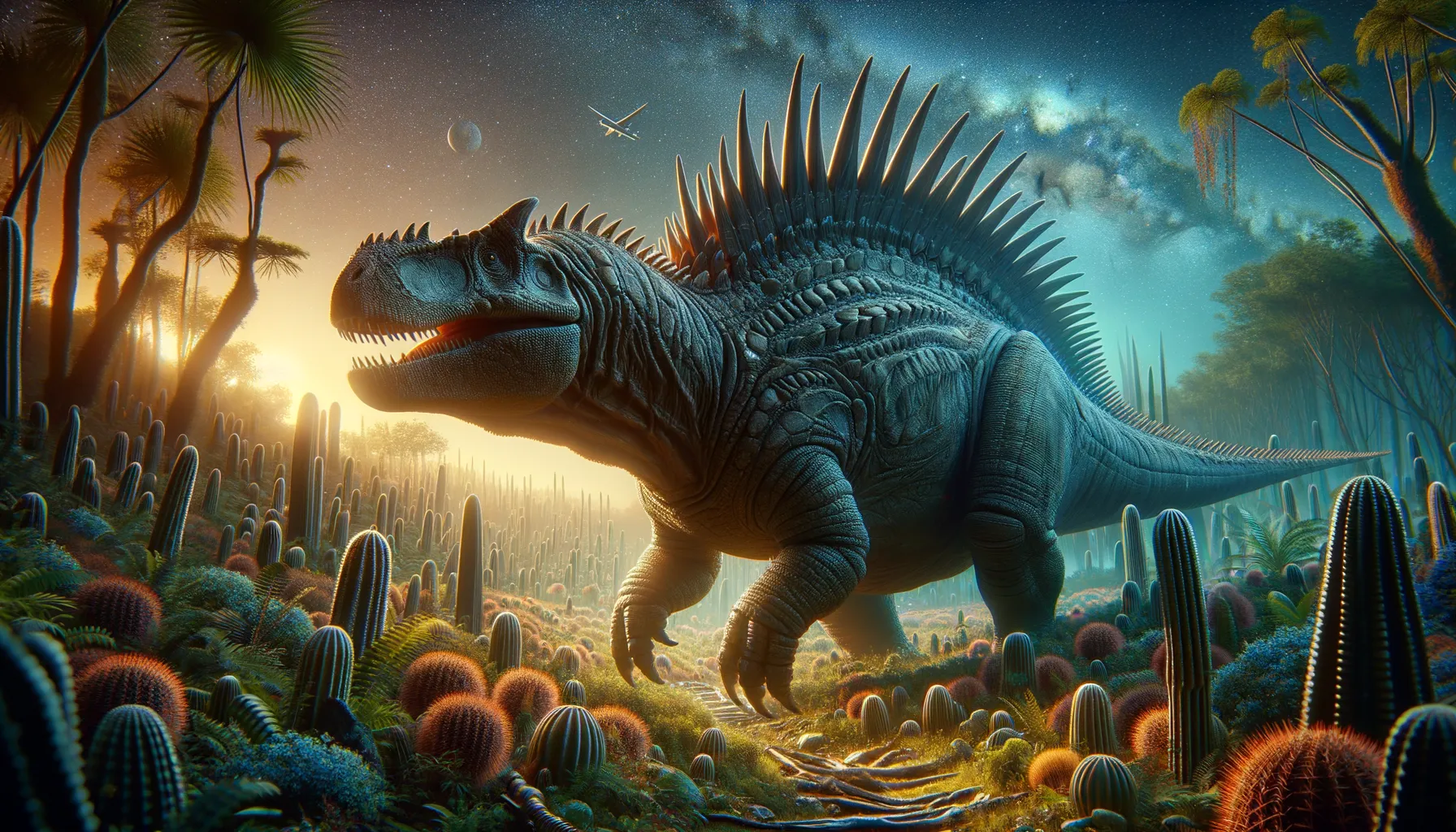
Pawpawsaurus
Armored guardian of the ancient plants.
Period
Cretaceous
Length
Measured about 4 meters long.
Height
Stood approximately 1.5 meters tall at the hip.
Weight
Estimated to weigh around 2 tons.
Pawpawsaurus was a mid-sized, plant-eating dinosaur known for its heavily armored body and protective spikes. It lived around 108 million years ago during the Cretaceous period. Its discovery in Texas sheds light on the diversity of ankylosaurs in North America. As a herbivore, it had specialized teeth for grinding plant material, and its armored plating offered protection against predators.
Diet
Pawpawsaurus was a herbivore, feeding primarily on low-lying plants. It likely consumed a variety of ferns, cycads, and other vegetation available in its environment. Its grinding teeth were adapted for an efficient plant-based diet.
Hunting
As a plant-eater, Pawpawsaurus did not hunt but foraged for its meals. It used its keen sense of smell to locate food sources, relying on the abundance of greenery in its habitat. Its slow movement meant it would focus on easily accessible plant life.
Environmental challenges
Pawpawsaurus inhabited a region with seasonal climate changes, requiring adaptation to varying temperatures and humidity levels. It faced challenges from predators like large carnivorous dinosaurs, prompting the evolution of its defensive armor. The availability of food sources varied with the seasons, affecting its diet and movement patterns. Geological changes over millions of years also influenced its habitat, dictating evolutionary adaptations.
Speed
Pawpawsaurus was slow-moving due to its heavy build.
Lifespan
Estimated to be around 70 years in its natural setting.
First discovery
Discovered in Texas, United States in 1992.
Fun Facts
- Pawpawsaurus was a dinosaur that lived about 100 million years ago during the Early Cretaceous period.
- It was an armored dinosaur, belonging to a group called ankylosaurs, known for their bony plates and armor.
- Pawpawsaurus was named after the Paw Paw Formation in Texas, where its fossils were discovered.
- This dinosaur had a large, spiky skull and a beak-like mouth, which it likely used to munch on plants.
- Despite its fearsome appearance, Pawpawsaurus was a herbivore and probably spent its life foraging for vegetation.
- The Pawpawsaurus is known to have walked on four legs, providing it with stability and strength to support its heavy body.
- Paleontologists believe that its armor was used for protection against predators rather than for combat.
Growth and Development
Pawpawsaurus, like many dinosaurs, hatched from eggs, growing steadily into its formidable adult size. Juveniles were likely more vulnerable to predators due to incomplete armor. Its growth cycle included developing heavily armored skin as protection matured over time. This gradual development enhanced survival chances as it aged into adulthood.
Habitat
Pawpawsaurus thrived in the lush, forested regions of what is now North America. Its environment was teeming with diverse plant life, providing ample food sources. The presence of rivers and lakes in its habitat offered water and a varied landscape. The dense vegetation and terrain also offered protection from predators.
Interaction with other species
Pawpawsaurus likely coexisted with other herbivorous dinosaurs, sharing grazing areas. Its defensive body armor provided it with an edge against more aggressive species. It might have formed loose, protective herds with other ankylosaurs to ward off predators. Competition for resources was tempered by its unique diet focusing on specific plant types.
Natural lifespan
Its natural lifespan was likely around 70 years.
Reproduction
Pawpawsaurus reproduced by laying eggs, likely in a protected nest. The nesting sites were probably located in concealed, safe areas to avoid egg predation. Maternal care after birth is uncertain, but juveniles hatched well-equipped with miniaturized body armor. This rapid development helped the young survive the moment they entered the world.
Social behaviour
Evidence suggests Pawpawsaurus may have lived in small herds for mutual protection. These groups could aid in the defensive advantage against larger predators. Its social interactions possibly included grazing together and protecting their nesting grounds. Communication among individuals might have included vocalizations or displays involving its armored fans.
Fossil locations
Pawpawsaurus fossils have primarily been found in North America, specifically in Texas. The discovery of its fossils has provided significant insight into the diversity of ankylosaurs. Continued study of these sites helps paleontologists understand the ecosystems of the Cretaceous period. The fossils are found mostly in sedimentary rock, highlighting ancient river and floodplain environments.
